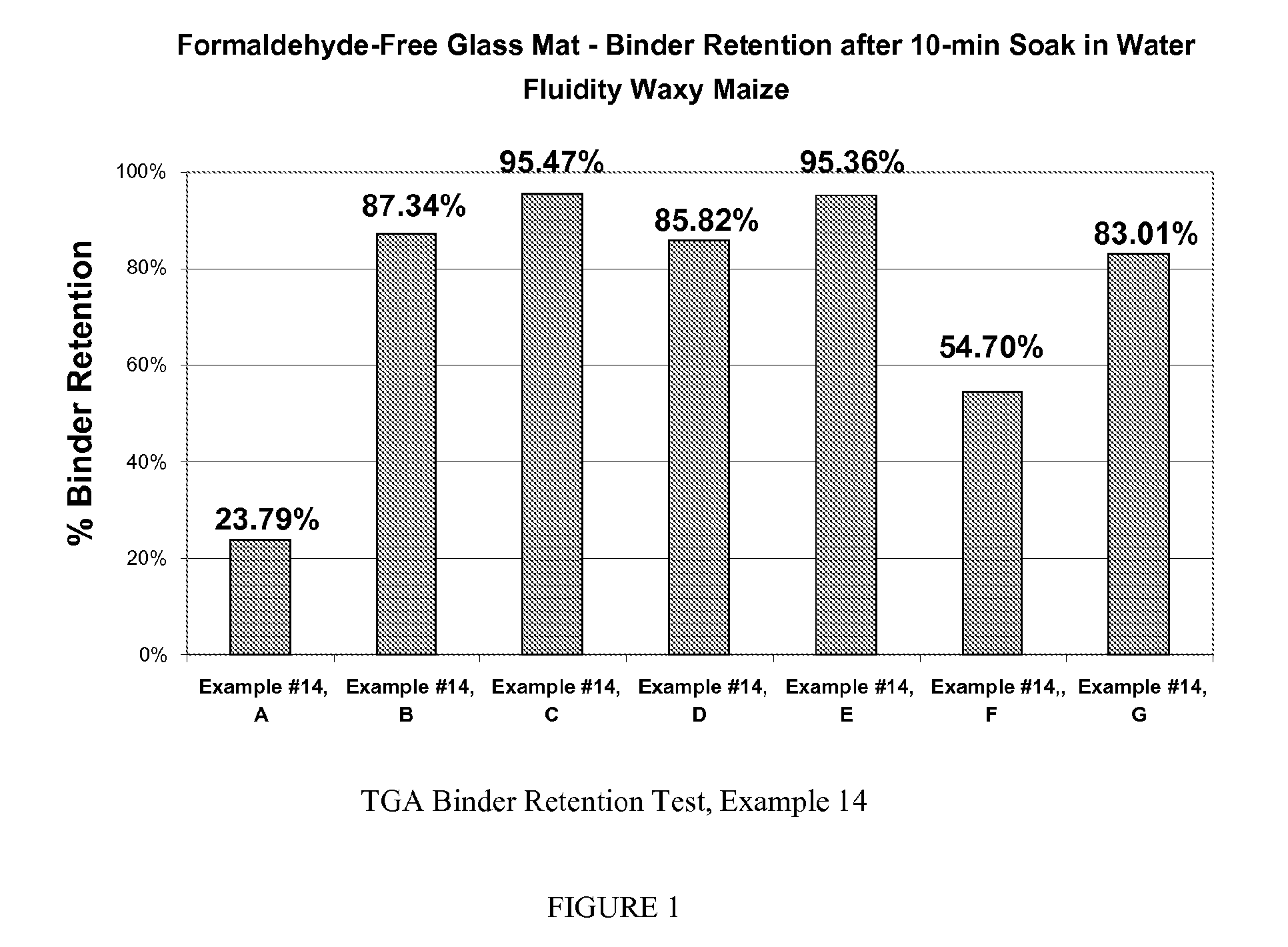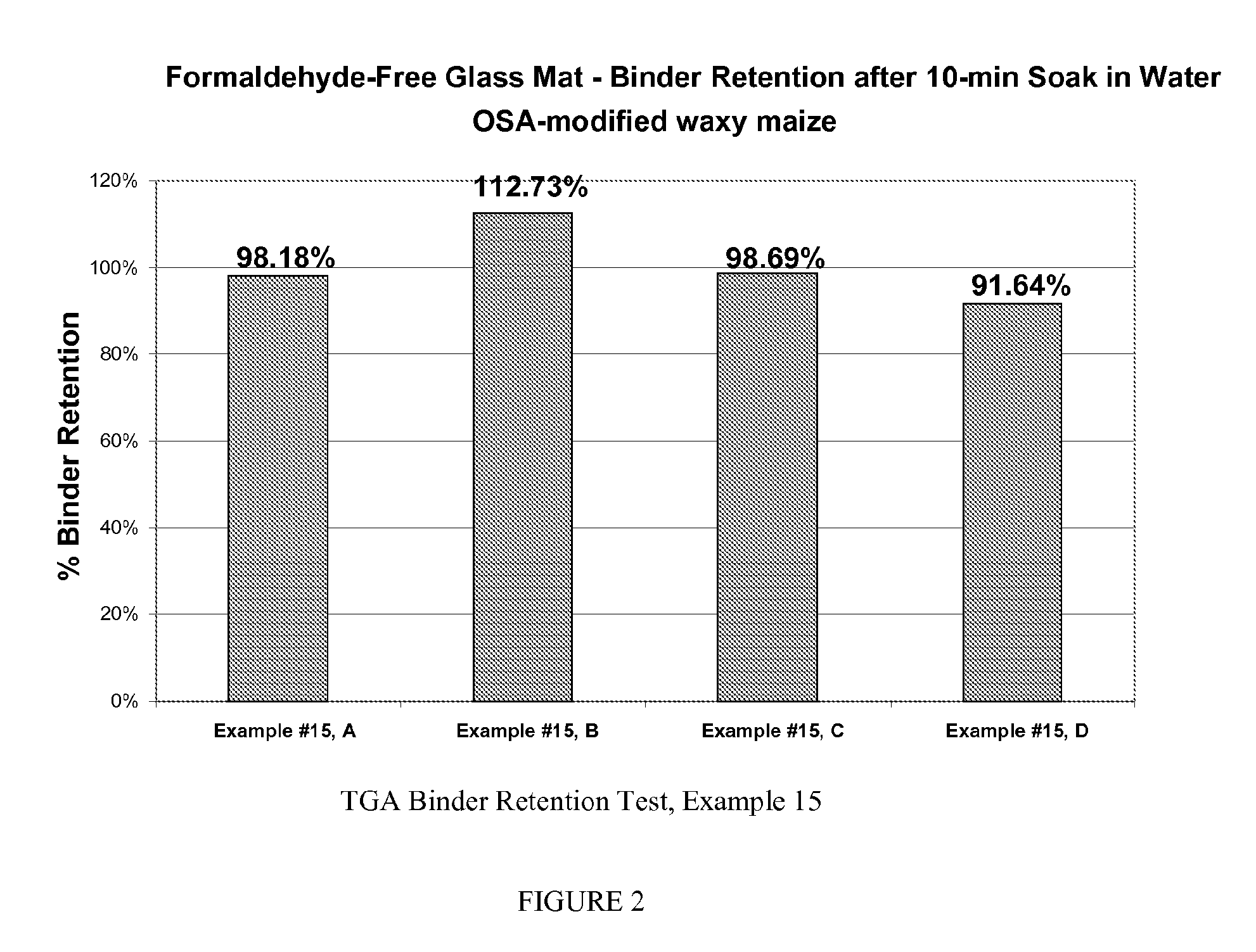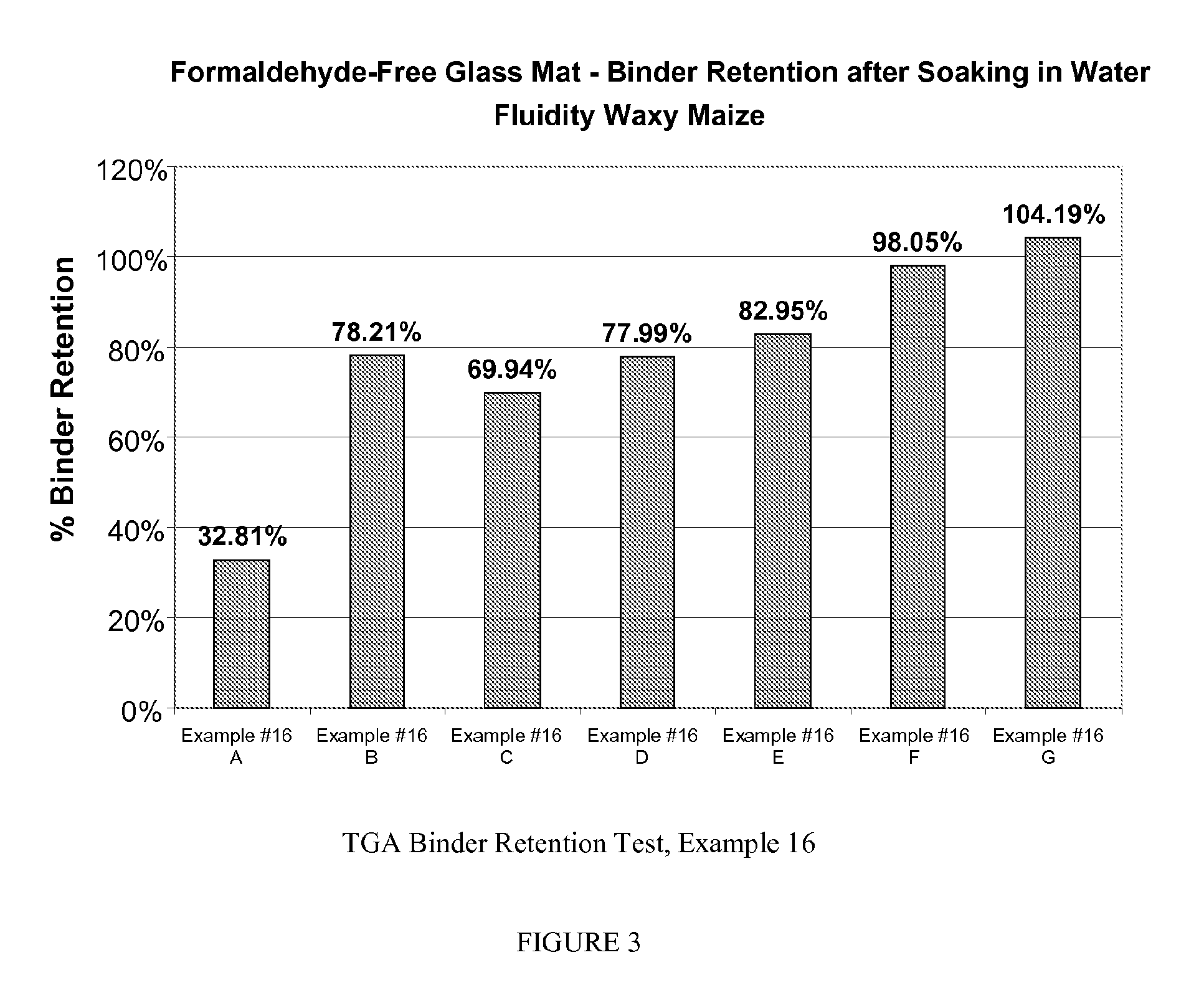Thermosetting polysaccharides
a technology of thermosetting polysaccharides and polysaccharides, applied in the field of composites, can solve the problems of low or slow cure time, lack of moisture resistance, and high cos
- Summary
- Abstract
- Description
- Claims
- Application Information
AI Technical Summary
Benefits of technology
Problems solved by technology
Method used
Image
Examples
example 1
[0050]A hydroxyethyl cellulose (QP 300 available from Dow) was depolymerized in the following manner. Thirty grams of QP 300 was introduced in to 270 g of deionized to water. Then the specified amounts (see Table 1) of Ferrous ammonium sulfate hexahydrate and of hydrogen peroxide (H2O2) solution (35% active) was added). In one example sodium persulfate was used as the depolymerization agent. The mixture was heated to temperature indicated (see Table 1) and held at that temperature for the time specified (see Table 1). The solutions were cooled to room temperature in the viscosities were measured initially and after a 24 hour period.
TABLE 1Viscosities of depolymerized CMC solutionsIngredientsabcdefghijkQP 300 in grams3030303030303030303030DI Water in grams270270270270270270270270270270270H2O2 (35%) in grams—222222246—Ferrous ammonium—0.050.050.050.050.050.10.30.050.050.05sulfate hexahydrate ingramsSodium Persulfate in——————————0.7gramsTemperature in ° C.60608010060606060606060Time in...
example 2
[0052]A carboxymethyl cellulose (Aqualon CMC 9M3ICT available from Hercules, Inc., Wilmington, Del.) was depolymerized in the following manner Thirty grams of Aqualon CMC was introduced in to 270 g of deionized to water. 0.03 g of Ferrous ammonium sulfate hexahydrate and 1 to 3 g of hydrogen peroxide (H2O2) solution (35% active) was added (see Table 1). The mixture was heated to 60° C. and held at that temperature for 30 minutes. The solutions were cooled to room temperature in the viscosities were measured initially and after a 24 hour period.
TABLE 2Viscosities of depolymerized CMC solutionsIngredientsABCAqualon CMC 9M3ICT30 g30 g30 gH2O2 (35%) 1 g 2 g 3 gFerrous ammonium sulfate hexahydrate0.03 g 0.03 g 0.03 g DI Water270 g 270 g 270 g % Solids in solution 1010 10Initial Viscosity (centipoise)5344315.2254Viscosity after 24 hours (centipoise)1632165.2103
[0053]These data in Table 2 indicate that the solution viscosities are fairly low (less than 1000 cps) which allows the materi...
example 3
[0054]The depolymerized CMC's of Example 2 in combination with a number of different cross-linkers was tested as a binder for fiberglass. The test protocol involved preparing a solution of the non-starch polysaccharide and the cross-linker. Glass microfiber filter paper sheets (20.3×25.4 cm, Cat No. 66227, Pall Corporation., Ann Arbor, Mich.) were then dipped into the binder solution and run through a roll padder. The coated sheets are then cured at 180° C. for 20 minutes in an oven. The weight of the sheets before and after curing was measured and this is used to calculate the weight of dry binder as a percentage of filter paper weight or mat.
[0055]All of the systems tested had excellent dry tensile strength (comparable to that of a formaldehyde-based system). The wet tensile strengths were estimated in the following manner. The cured sheets are then soaked in water for 10 minutes and then were tested by pulling apart by hand. The wet tensile strength was given a qualitative rating...
PUM
| Property | Measurement | Unit |
|---|---|---|
| Percent by mass | aaaaa | aaaaa |
| Fraction | aaaaa | aaaaa |
| Weight | aaaaa | aaaaa |
Abstract
Description
Claims
Application Information
 Login to View More
Login to View More - R&D
- Intellectual Property
- Life Sciences
- Materials
- Tech Scout
- Unparalleled Data Quality
- Higher Quality Content
- 60% Fewer Hallucinations
Browse by: Latest US Patents, China's latest patents, Technical Efficacy Thesaurus, Application Domain, Technology Topic, Popular Technical Reports.
© 2025 PatSnap. All rights reserved.Legal|Privacy policy|Modern Slavery Act Transparency Statement|Sitemap|About US| Contact US: help@patsnap.com



